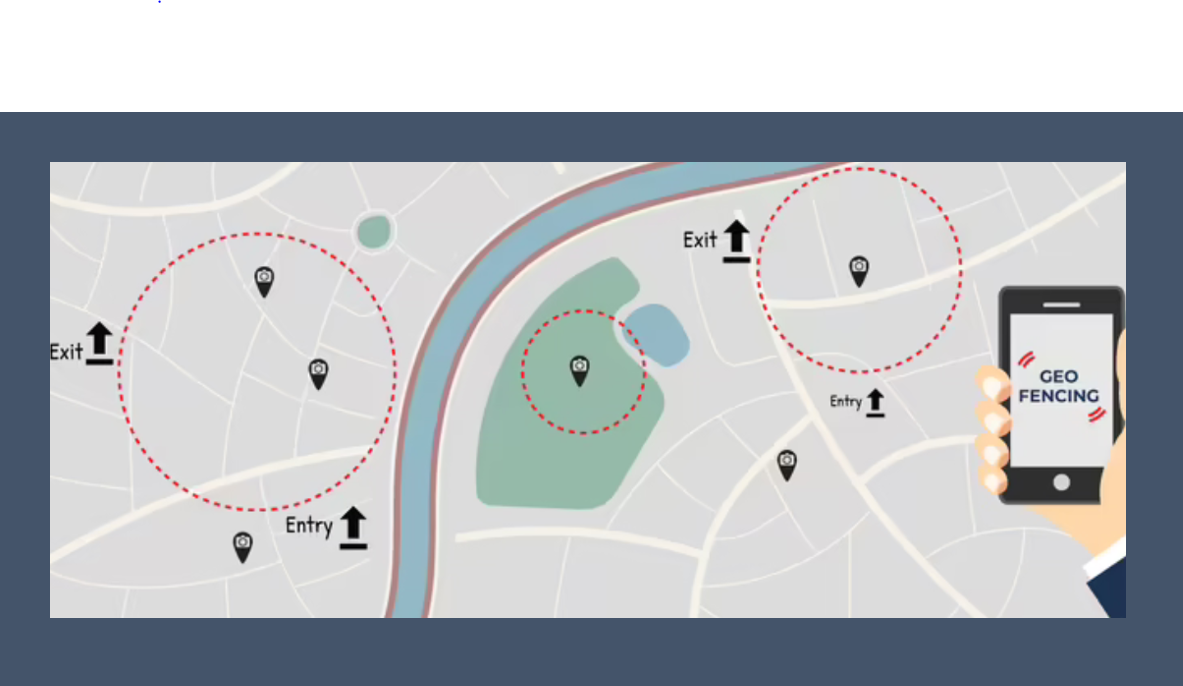

Organizations can target consumers at a granular, individual level with offline or online messaging based on their actual location using location-based marketing. Marketing teams can use location data to reach customers based on proximity to a shop, upcoming events in their area, and more.
From discovery and purchase to engagement and retention, location-based marketing has been demonstrated to be beneficial. Indeed, when done correctly, location-based marketing allows businesses to target specific client categories with personalized offers while also improving the customer experience for a generation that values quick gratification. For instance, location-based marketing may notify a prospect that a product they are considering is in stock in a nearby store, enabling them to purchase it right away.
Technologies Employed in Location-based Marketing
In addition to other marketing approaches learn some tactics employed in location-based ads and how they operate.
Geo-fencing
Geo-fencing denotes technologies like GPS, IP addresses, and RFID to create a virtual barrier around a given location. The purpose is to offer customers location-specific advertisements who enter that geographic boundary.
Now, a Shop owner can create a digital barrier around the store’s perimeter. Users that enter that radius may receive an offer, a notification, or a discount from the store. Geo-targeting will provide you far better results if you want to target users that fulfill your requirements.
Geo-targeting
Both geo-targeting and geo-fencing both use location technologies. Geo-targeting, contrasting to geo-fencing, allows you to target customers based on interests, demographics, activity, and even purchase history. Similarly, businesses can have ad campaigns that are specifically suited to your target market.
As a result, rather than targeting anybody who walks into a certain region, you target people that meet your specified requirements. You could, for example, target car-obsessed men over 30 in a specific area. Customers who have visited your shop in the last ninety days and are currently in the region can also be targeted.
Beaconing
Beacons are Bluetooth or WiFi-enabled devices that connect to specified applications are within the range of the beacon. Beacons are an effective way to reach out to existing clients in a small geographic area.
Now, Beacons send a signal to your device, requesting that a server send content to it. This could be a push notice, an email, or something else entirely. Let’s say a sports stadium encourages fans to download their app for ticketing, concessions, and other services. When a device with the application loaded is in range, the venue will set up beacons to detect it.
Benefits
To take advantage of this, users must be opted-in and have Bluetooth turned on. However, using location-based targeting gives you a more direct line of connection with your clients.
Indoor tracking allows businesses to follow users more precisely. This enables more precise targeting and aids marketers in gaining a better understanding of client behavior.
These notifications can be received even if the user is not online.
Examples
Stores can deploy beacons throughout the store to transmit offers to customers as they browse. A supermarket store, for example, might employ beacons to detect when a customer is in the ice cream aisle and then give them a coupon for ice cream cones.
Location-based push notification campaign
Location-based push notifications are useful for various things, including date match alerts, nearby retailers, and more. However, if you want to provide your consumers fine dining restaurant bargains in their current location, for example, send them notifications based on their preferences in the area. Dating applications like Tinder and Bumble are another good example of which interest-based geological notifications play an important role.
Are you planning a unique campaign for a specific geographic area? Make the process easier by segmenting the audience by country and then even more by region. Based on your business needs, you may easily include or remove any country or region. Begin by generating segments and triggering notifications according to your company’s time zone and area.
Reasons to Use Location-Based Marketing
Consumers and marketers alike can profit from location-based advertising. Certainly, marketers may send more focused messages to customers and prospects, increasing awareness and nurturing relationships.
The following are some of the main reasons why marketers use location-based tactics:
- Boost Foot Traffic Right Away
- More relevant advertising will be sent.
- Distract customers from your competitors.
- Improve the User Experience
Brands Using Location-Based Marketing as an Example
Adidas: Meanwhile, Adidas used location extensions to encourage users to shop at the nearest store in their search advertisements. One out of every five persons who saw the page visited a real store, resulting in a 680 percent boost in return on investment.
Whole Foods: To gain market share and enhance conversions, Whole Foods implemented geofencing and geo-conquesting strategies. Similarly, the retailer offer special discounts to shoppers at surrounding food stores, enticing them to visit Whole Foods instead. Indeed, buyers who were already planning to go to Whole Foods or pass by get special incentives, enhancing existing customer experiences and bringing new customers to the neighborhood. The conversion rate for this campaign was 4.69 percent (the national average is 1.43 percent)
Take away
The aim is to give users a personalized and relevant experience. People want you to know what they’re going through, foresee their requirements, and provide them with useful solutions to their difficulties. All mobile marketing trends based on location are moving in that manner. Analyze the findings and examine the data to see which approaches performed best for your company and which didn’t. To gain a deeper understanding of what generated conversions, combine geo-zone analytics with marketing attribution analytics.
No Comments